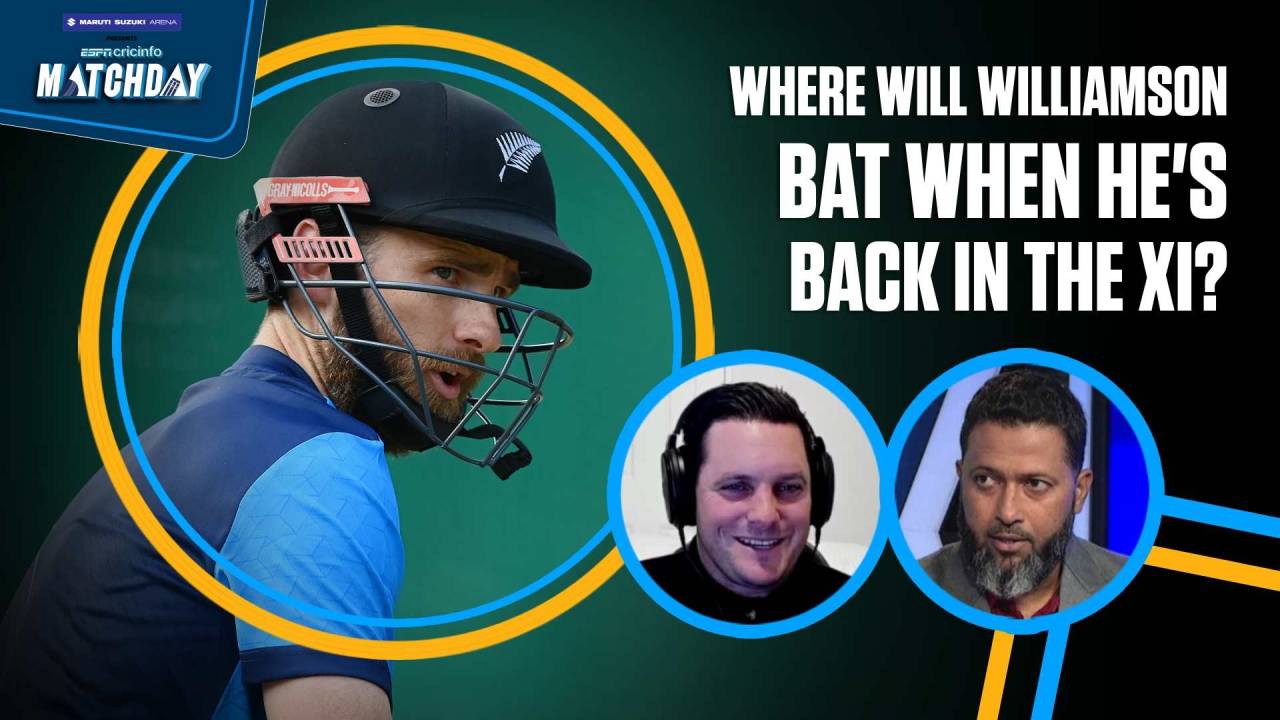After the emotional release of their victory over England - the team that denied them the trophy four years ago - in the World Cup opener, New Zealand continued their campaign in almost surgical style against Netherlands. The runs were scored, the wickets and catches (mostly) taken, two points secured, NRR gains made and, most importantly, selection questions answered. It is the last of those that was their biggest takeaway from this win.
New Zealand came into the tournament with only 12 of their 15-player squad available for the first game, with
Kane Williamson and
Tim Southee recovering from serious injuries and
Lockie Ferguson suffering back stiffness. By the time they play their next match, on Friday, they should have all 15 players available and the performance against Netherlands could help them decide who to pick.
Let's start with the obvious: when captain Williamson is ready for competitive cricket, he'll slot straight back in at No. 3, which would ordinarily leave room for only two of Devon Conway,
Will Young and
Rachin Ravindra. All three have put good numbers on the board at this tournament, Young becoming the latest to do so. He came back from a second-ball duck against England to score his sixth half-century this year and third in six innings, making a strong claim to continue as an opener.
As much as the runs mattered, the manner in which he scored them may end up counting for more. Young's first signs of aggression came in the fourth over, when he took two fours off Ryan Klein to get New Zealand going, but a hallmark of this innings was his takedown of spin. His first six was a glorious, high-elbowed loft over long-on off Aryan Dutt. Later, he played a similar shot off Colin Ackermann. In total, Young scored more than half his runs - 39 - off the 38 balls of spin he faced and he did it at a good time. New Zealand's next two matches are on spinner-friendly surfaces in Chennai against spin-heavy sides, Bangladesh and Afghanistan, and Young has shown the kind of form that merits a place.
That means when Williamson returns, if New Zealand want to retain their current opening pair and Ravindra's form, they will have to make some changes to the composition of their line-up. The most likely solution will be to bench
Mark Chapman, who won the thanks-for-coming award in the England match (he did not bat or bowl) and then scored 5 against Netherlands, and to ask Ravindra to bat in the No. 6 spot. An alternative would be to allow Ravindra to bat at No. 4 and have the others move one spot down. Either way, Chapman is the most likely to fall away,
according to ESPNcricinfo expert Mitchell McClenaghan.
Leaving out Chapman and James Neesham - who made way for Ferguson against Netherlands - means that lower-order runs from Mitchell Santner hold significant weight. Batting at No. 8 in Hyderabad, Santner played a cameo that was the difference between New Zealand scoring 285 and 320; he took 18 runs off the last over as Bas de Leede lost his composure and Santner picked his slower ball. Although it was only a welcome top-up in this match, a contribution like that could be crucial in future contests.
Matt Henry was with Santner for the final phase of the innings and contributed a four-ball 10, which should be a footnote but also adds to his case as New Zealand assess the make-up of their attack. That's where a tough decision will have to be made between Tim Southee, Henry, Ferguson and Trent Boult. No team will mind having this kind of problem of plenty but New Zealand still need to figure out how to solve it.
As things stand, Henry has made himself undroppable with six wickets in his first two matches and it's not just the numbers that work in his favour. He has taken wickets with the new and old ball and consistently troubled batters in the channel and found the edge. In the last two years, Henry has 38 wickets at an average 25.18 and
McClenaghan said he would pick him over Southee, even if Southee is fit.
That would likely mean a longer run for Ferguson, who had recovered for this clash. He bowled eight overs, conceded at four runs an over and showed off his variations with but did not deliver anything in the 145kph-plus range, which is what New Zealand would want from him at this tournament. It may have been that Ferguson was being conservative on his comeback from injury but if he is not going to offer out-and-out pace, it could open the door for Southee to get some game time.
"This is the option - in the next game against Bangladesh, do you want to get three wins in a row? He bowled really well against Bangladesh in the past - he troubled them with speed, but if the speed is not there in these conditions, he may not be as troubling," McClenaghan said. "You've also got to think about if you'd rather get overs into Tim Southee in a competitive fixture, and is that going to be this next game against Bangladesh?"
Whichever way New Zealand go, in Boult, Henry, and one of Ferguson, Southee or Neesham, they have an attack with the qualities to be among the best in the tournament and are stacking up fairly well albeit still early in the event. While McClenaghan was slightly concerned about some lapses in their intensity, especially in the field, where they put down five chances, none of them cost much. Even if New Zealand were going through the motions at stages, they got everything they needed from this match - including a bit of a test with the ball - to set themselves up for the ones to come.

